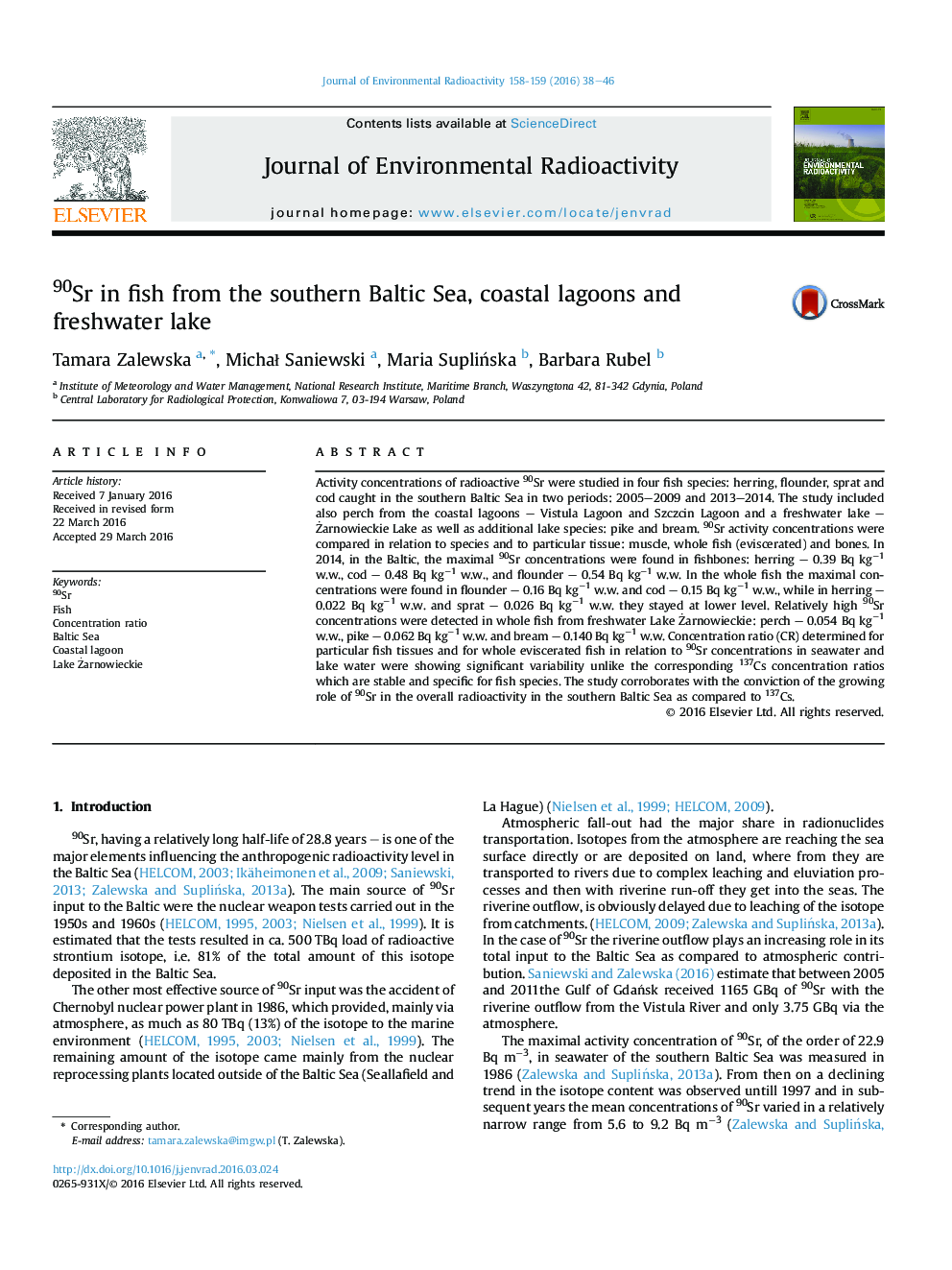| Article ID | Journal | Published Year | Pages | File Type |
|---|---|---|---|---|
| 8081814 | Journal of Environmental Radioactivity | 2016 | 9 Pages |
Abstract
Activity concentrations of radioactive 90Sr were studied in four fish species: herring, flounder, sprat and cod caught in the southern Baltic Sea in two periods: 2005-2009 and 2013-2014. The study included also perch from the coastal lagoons - Vistula Lagoon and Szczcin Lagoon and a freshwater lake - Å»arnowieckie Lake as well as additional lake species: pike and bream. 90Sr activity concentrations were compared in relation to species and to particular tissue: muscle, whole fish (eviscerated) and bones. In 2014, in the Baltic, the maximal 90Sr concentrations were found in fishbones: herring - 0.39 Bq kgâ1 w.w., cod - 0.48 Bq kgâ1 w.w., and flounder - 0.54 Bq kgâ1 w.w. In the whole fish the maximal concentrations were found in flounder - 0.16 Bq kgâ1 w.w. and cod - 0.15 Bq kgâ1 w.w., while in herring - 0.022 Bq kgâ1 w.w. and sprat - 0.026 Bq kgâ1 w.w. they stayed at lower level. Relatively high 90Sr concentrations were detected in whole fish from freshwater Lake Å»arnowieckie: perch - 0.054 Bq kgâ1 w.w., pike - 0.062 Bq kgâ1 w.w. and bream - 0.140 Bq kgâ1 w.w. Concentration ratio (CR) determined for particular fish tissues and for whole eviscerated fish in relation to 90Sr concentrations in seawater and lake water were showing significant variability unlike the corresponding 137Cs concentration ratios which are stable and specific for fish species. The study corroborates with the conviction of the growing role of 90Sr in the overall radioactivity in the southern Baltic Sea as compared to 137Cs.
Related Topics
Physical Sciences and Engineering
Energy
Nuclear Energy and Engineering
Authors
Tamara Zalewska, MichaÅ Saniewski, Maria SupliÅska, Barbara Rubel,
